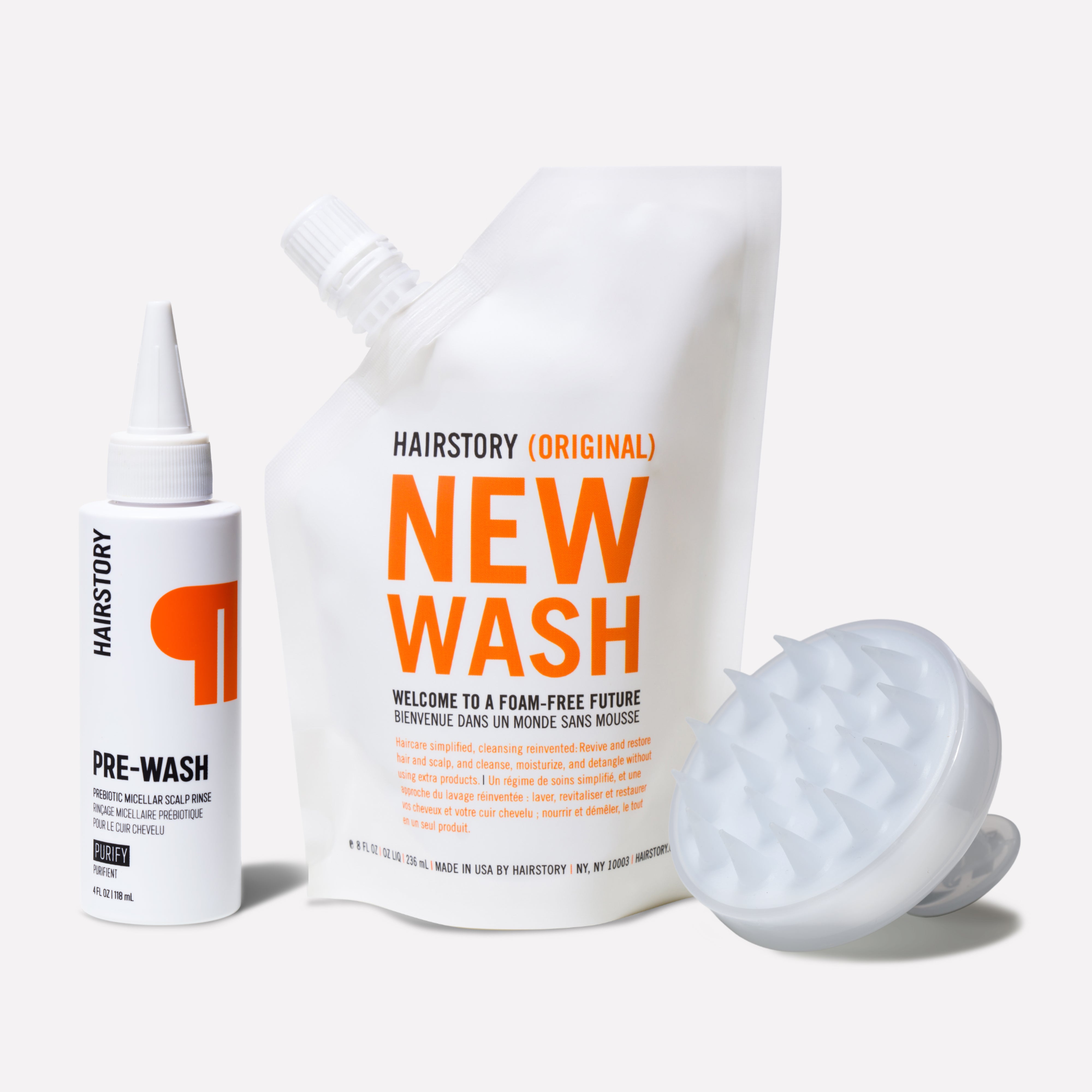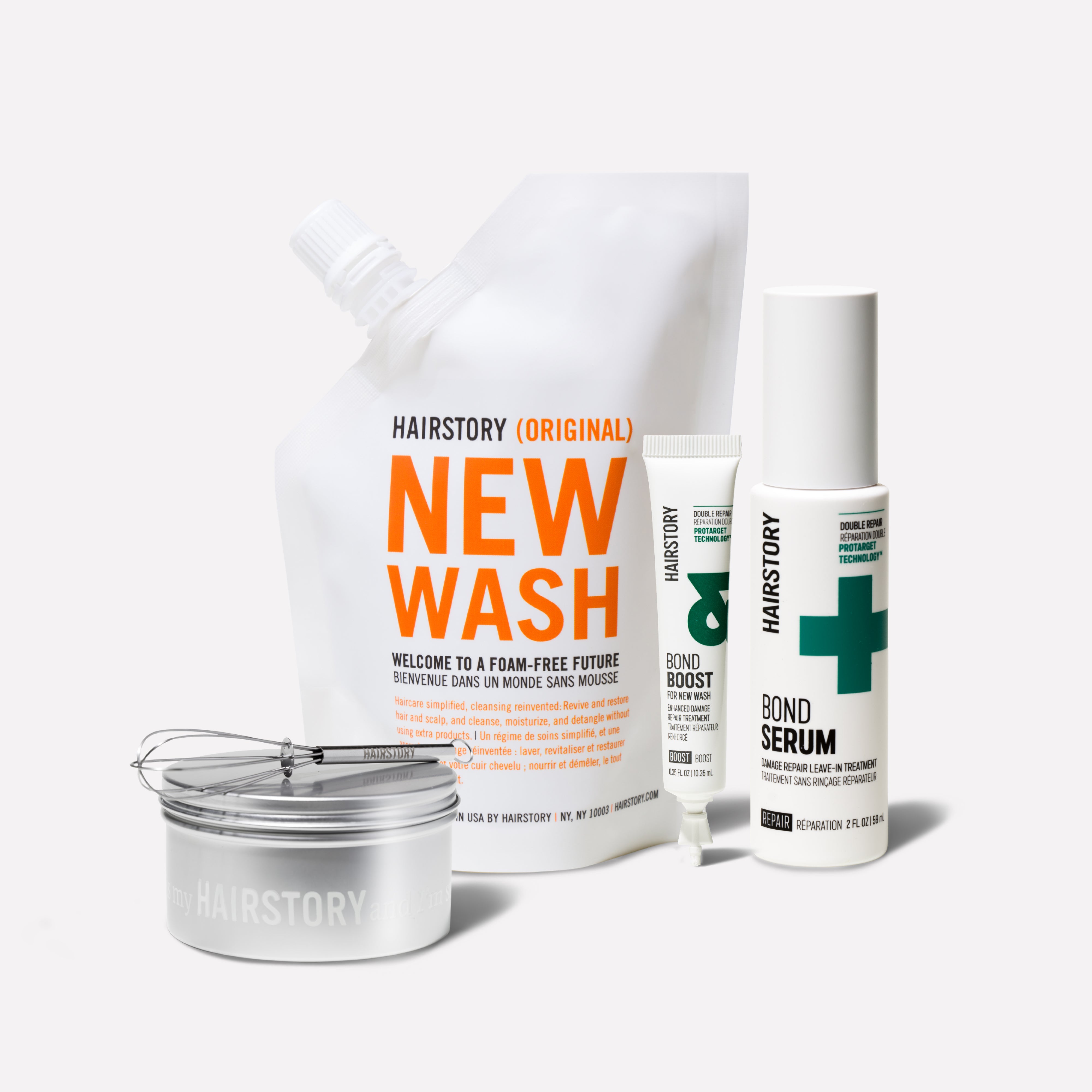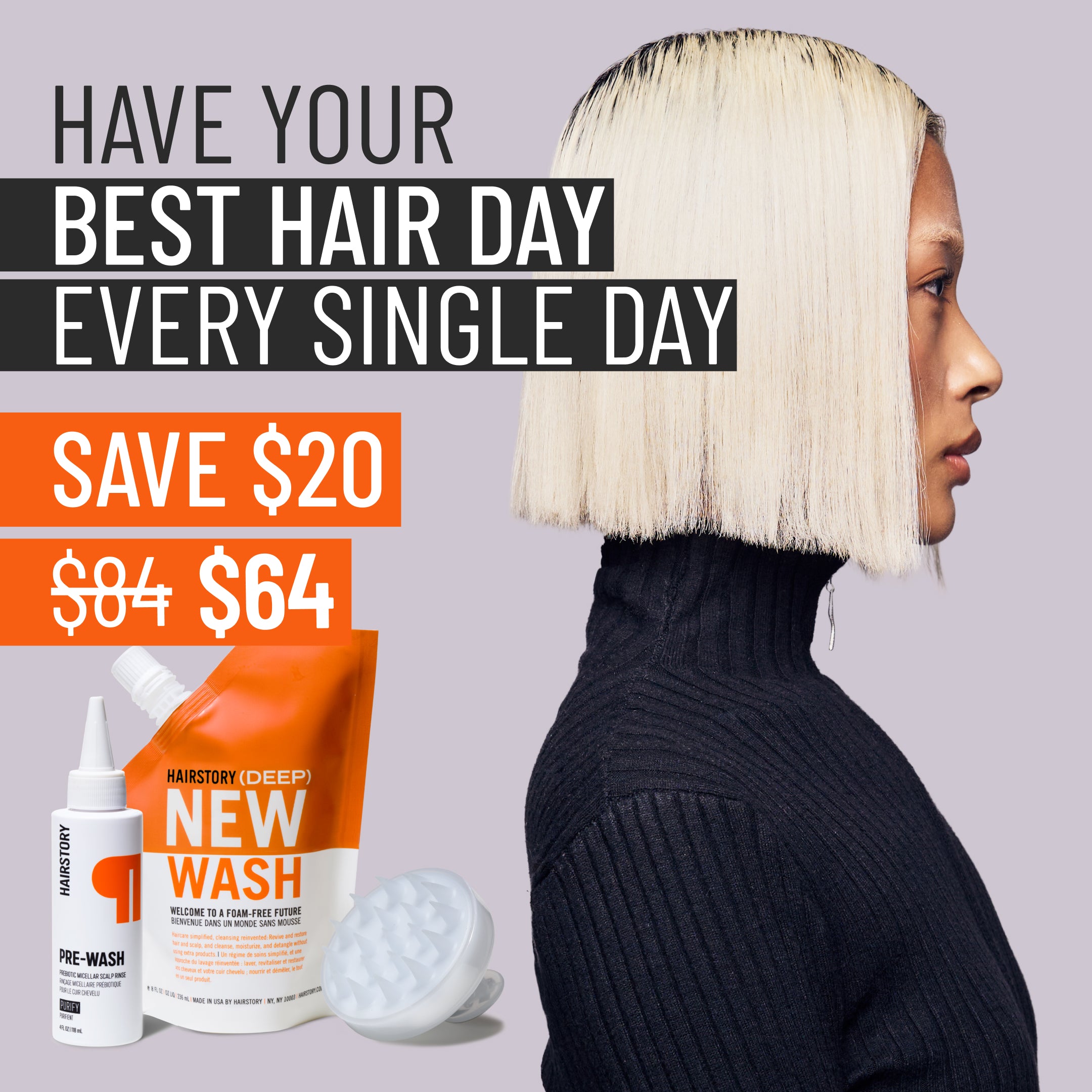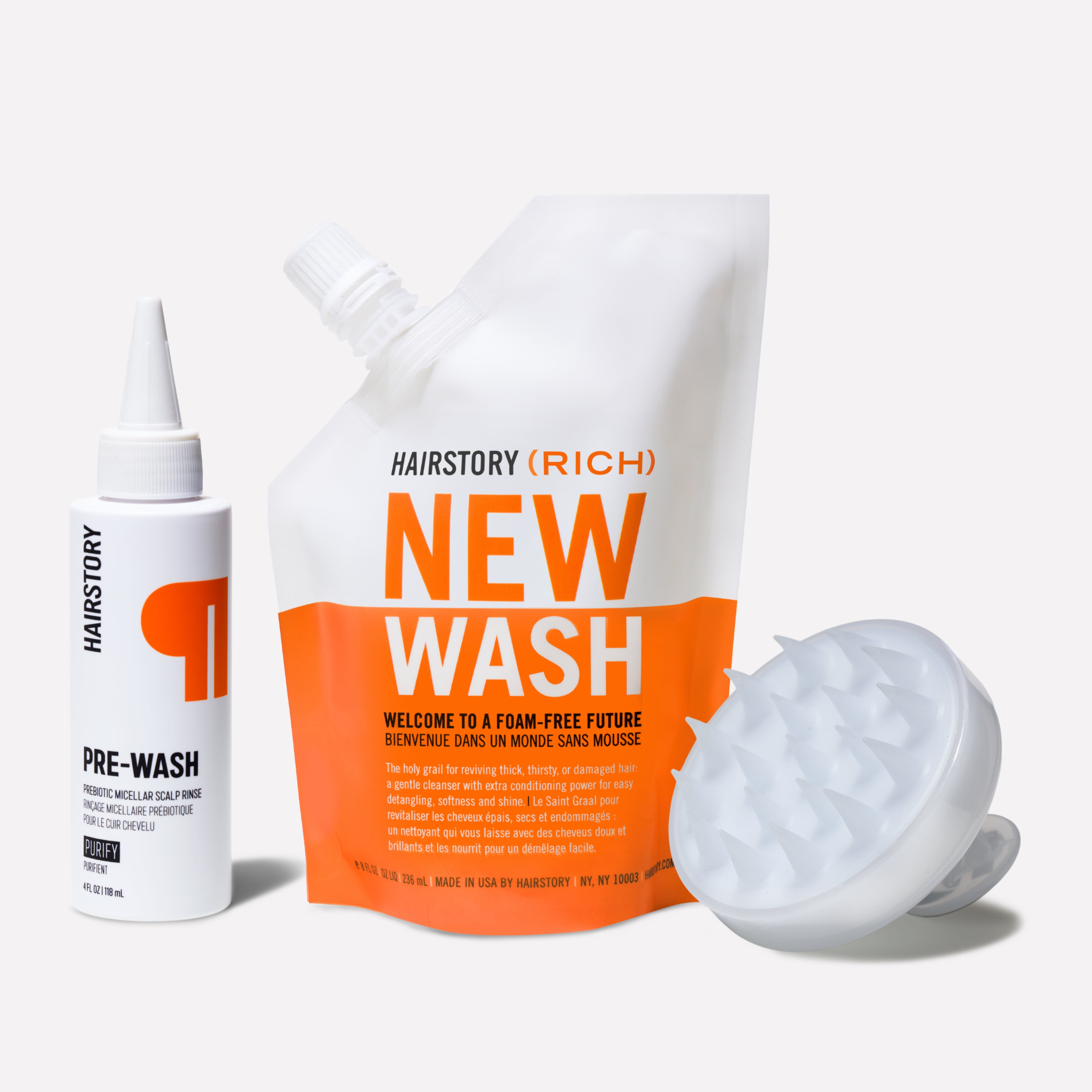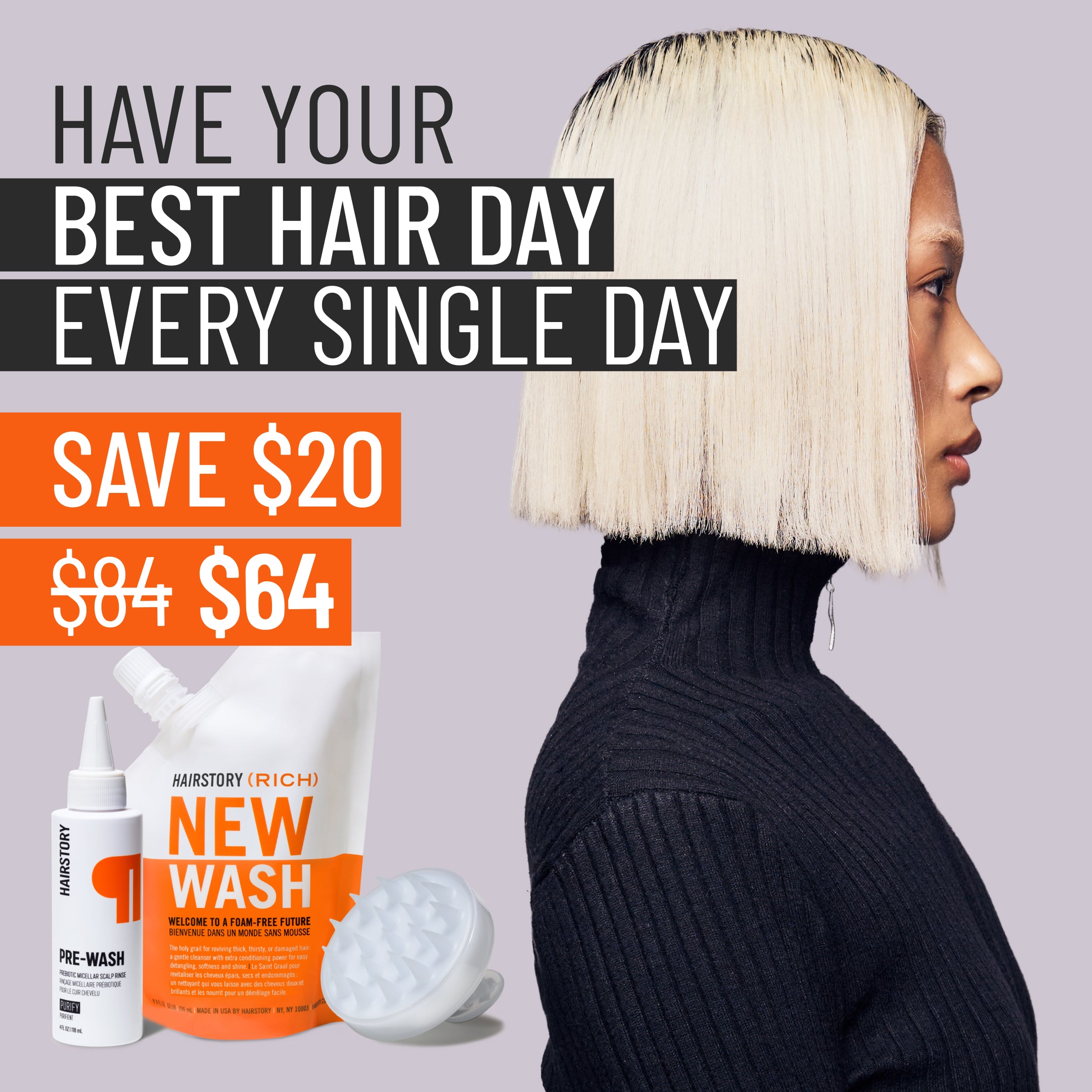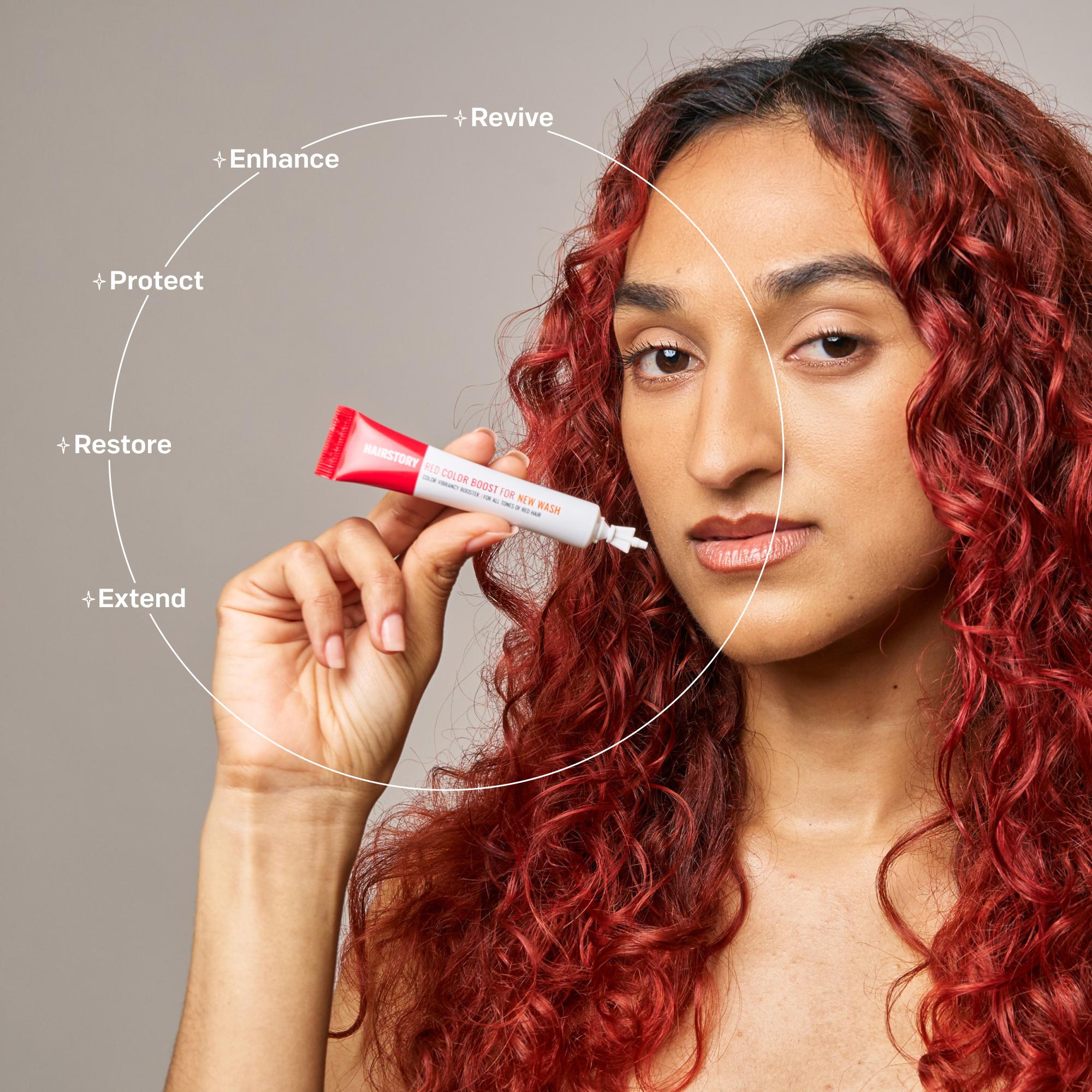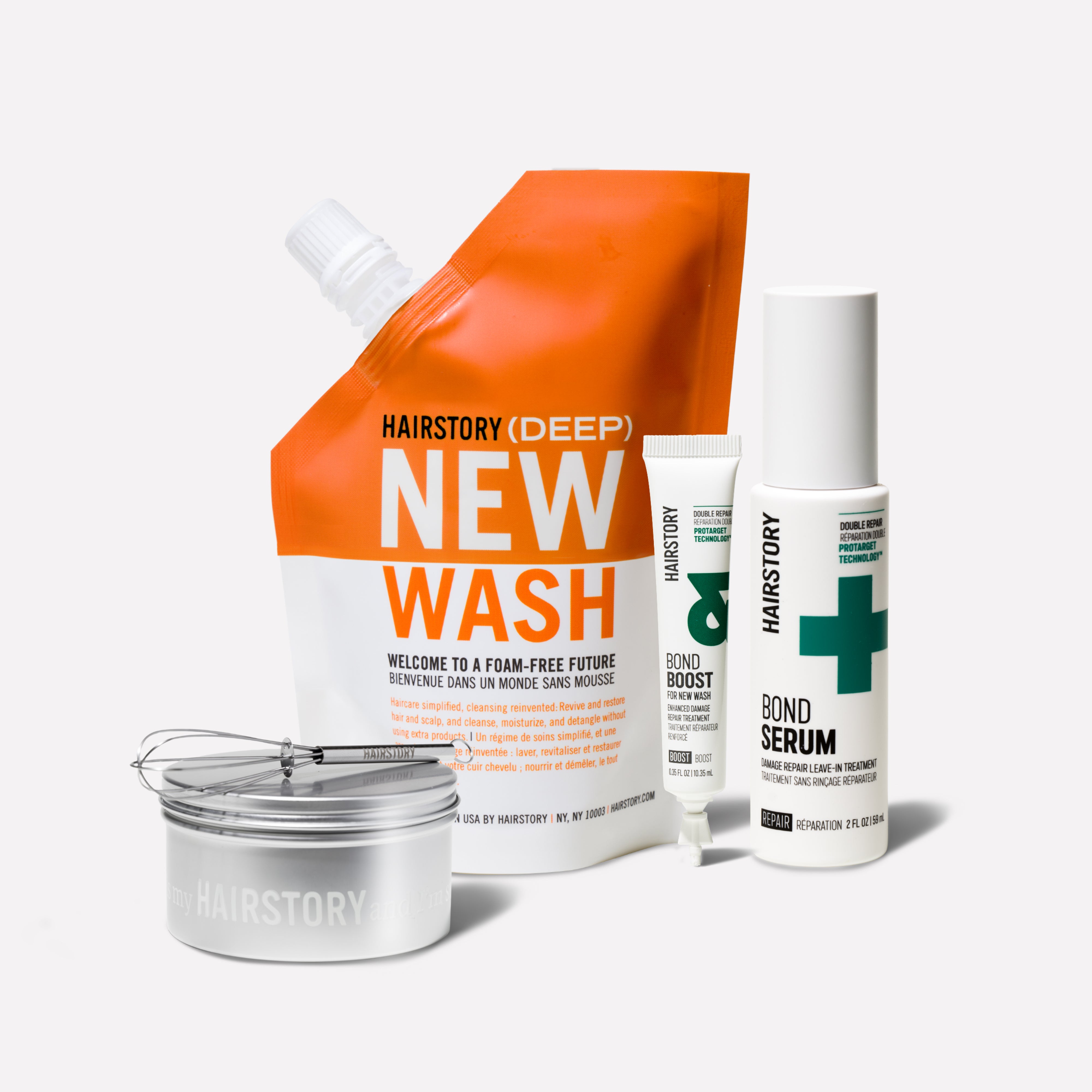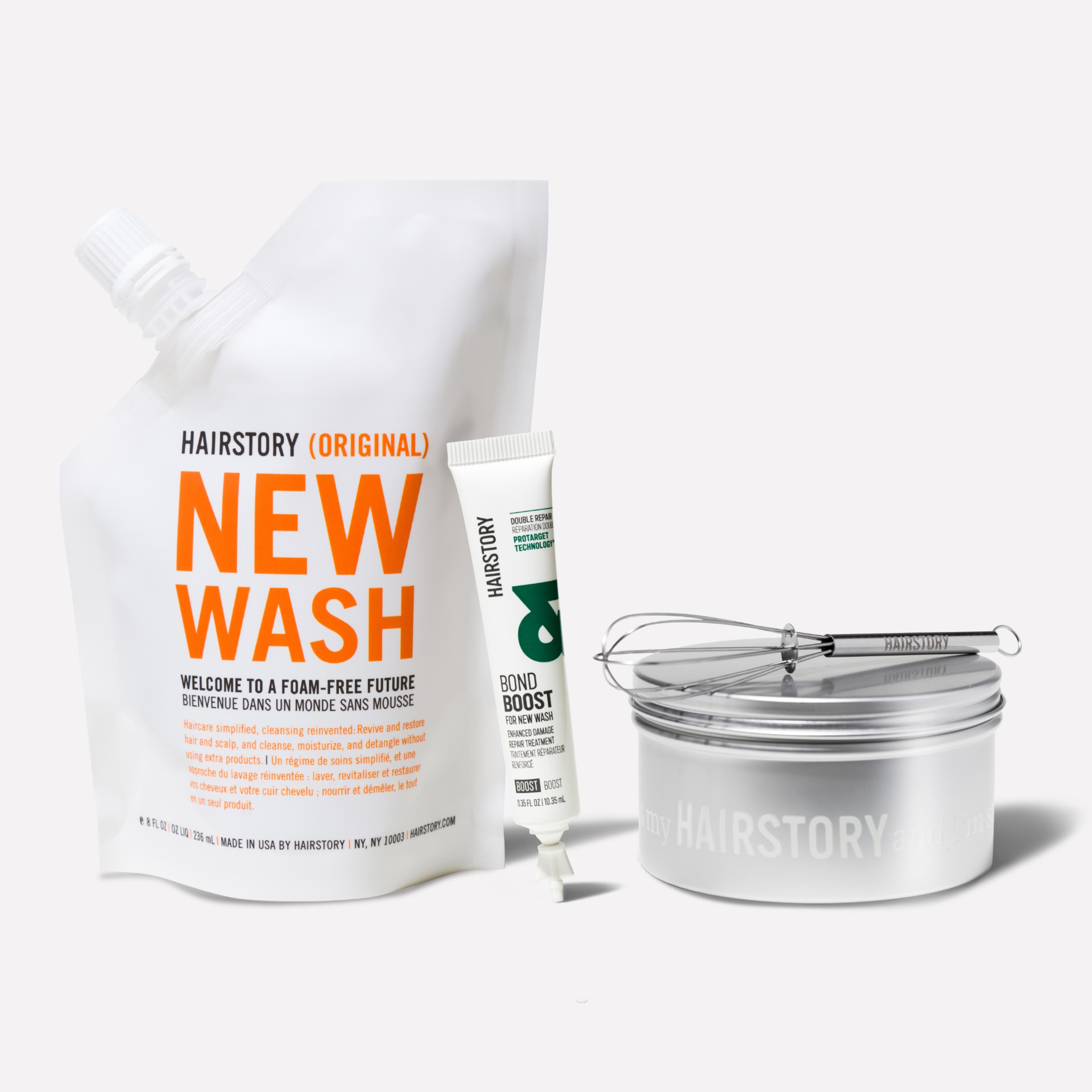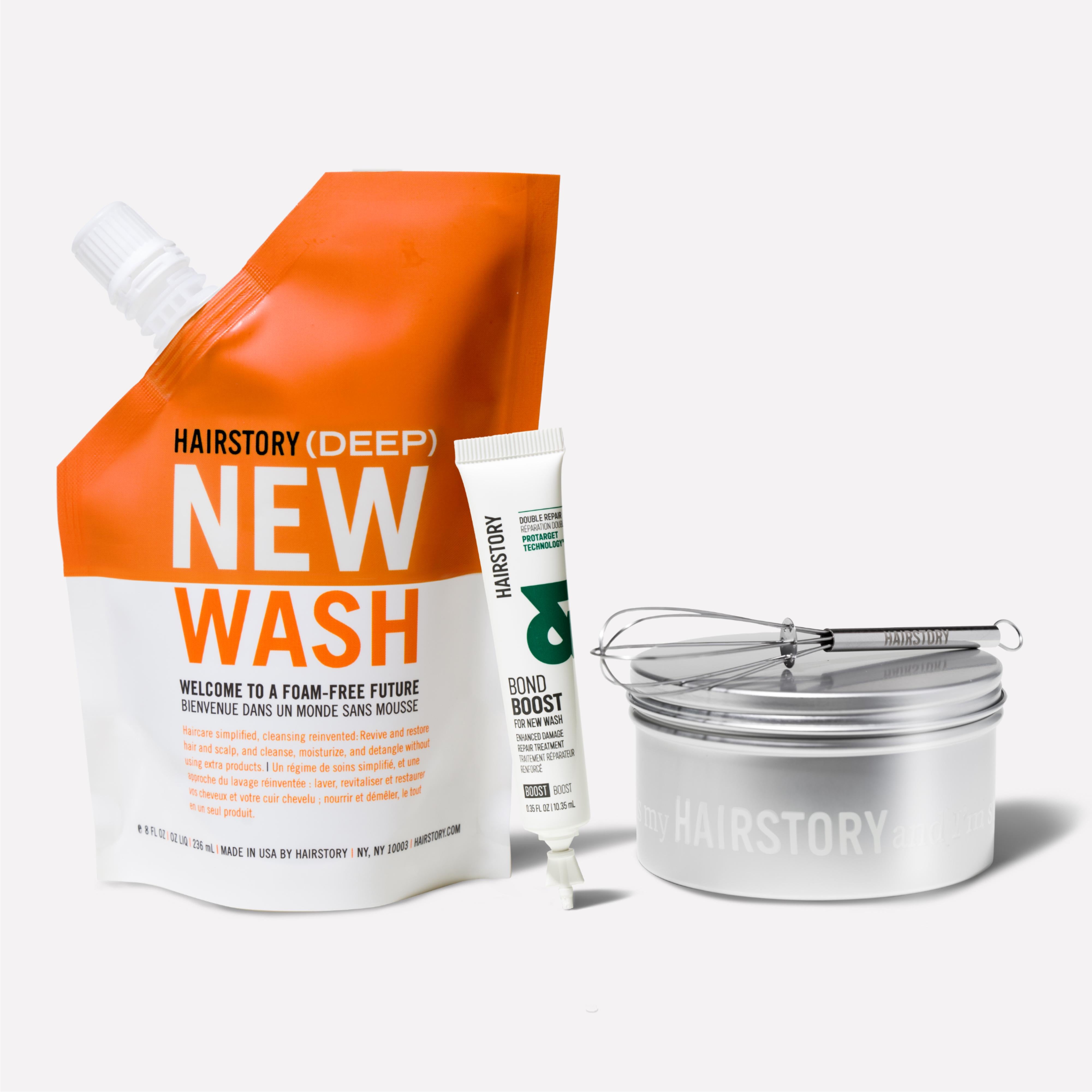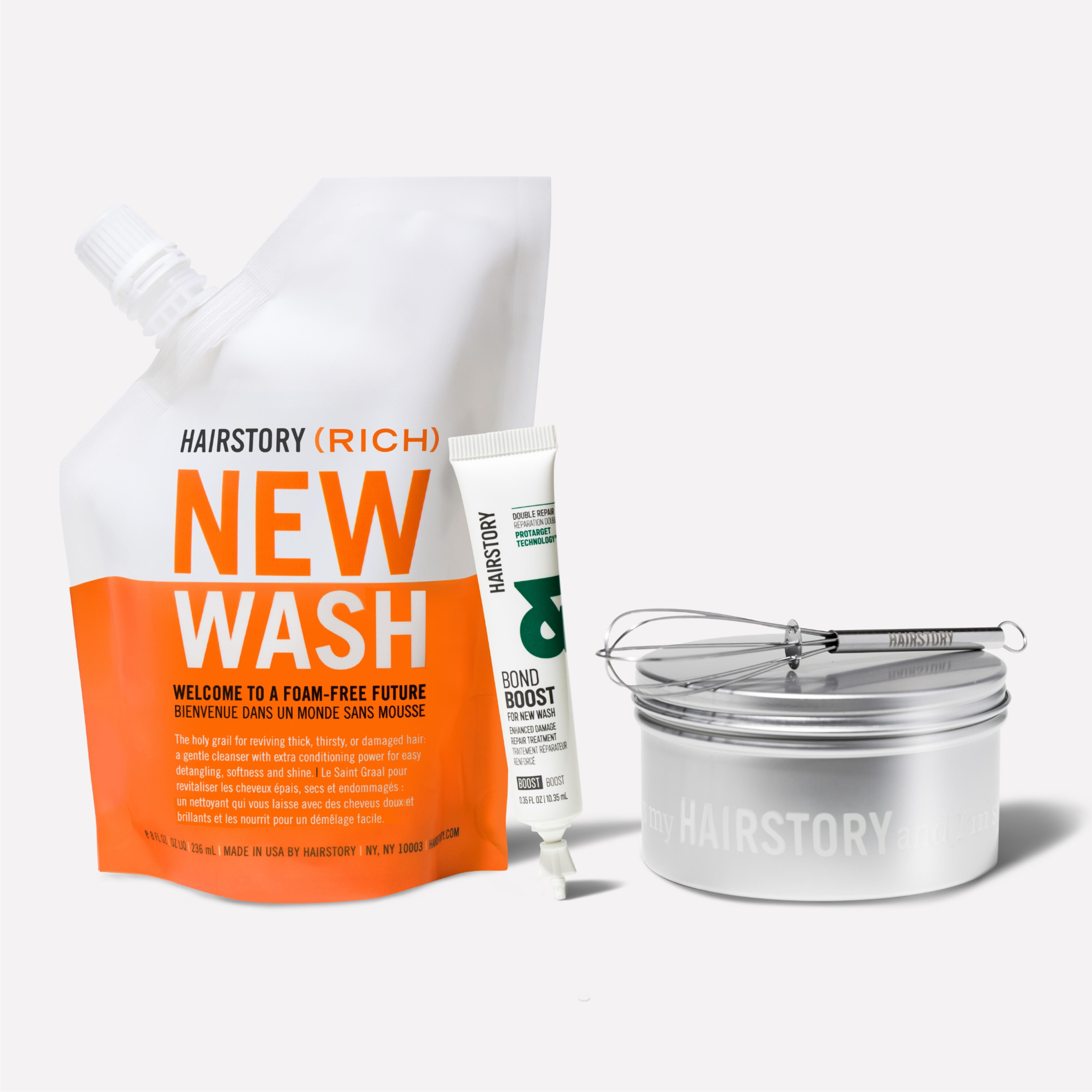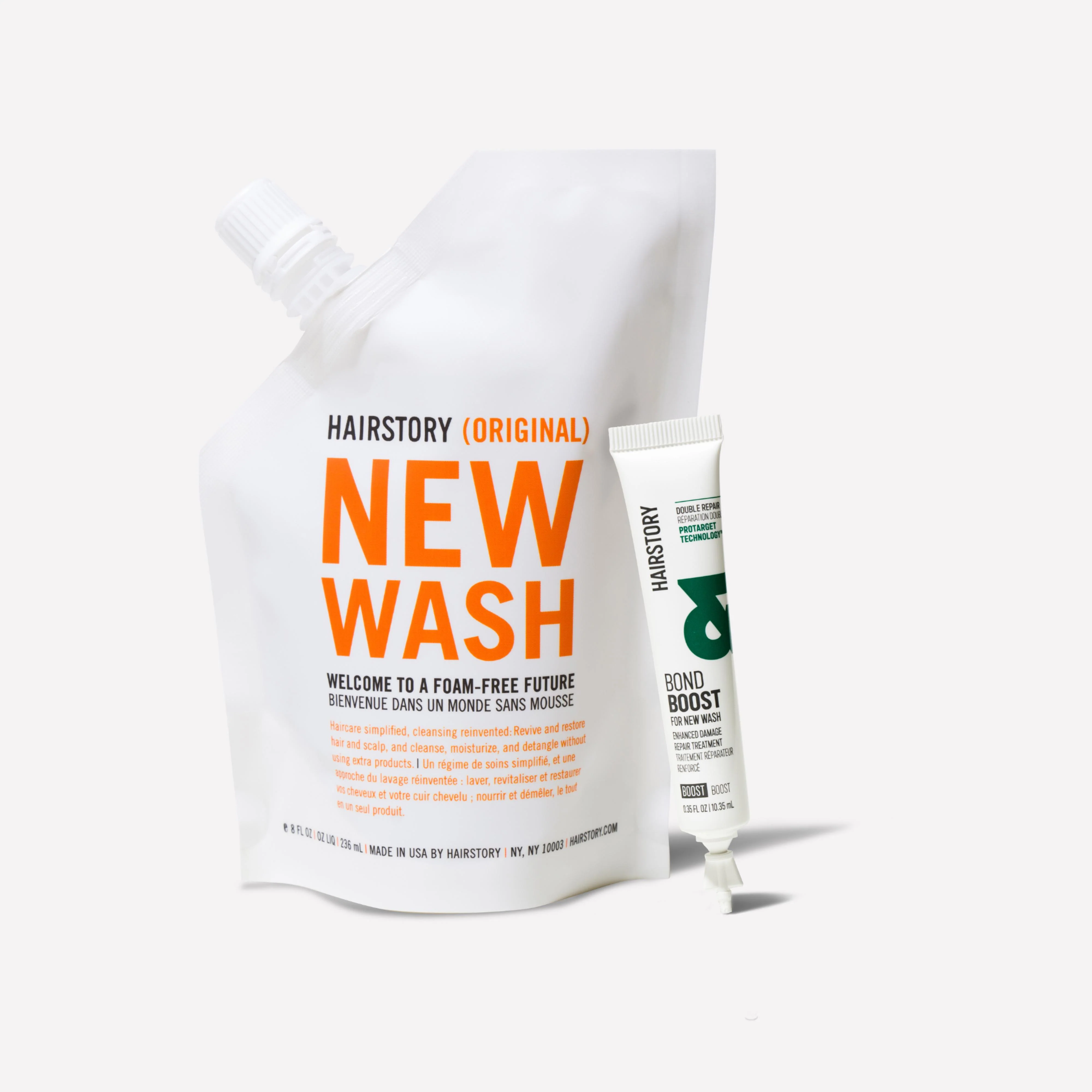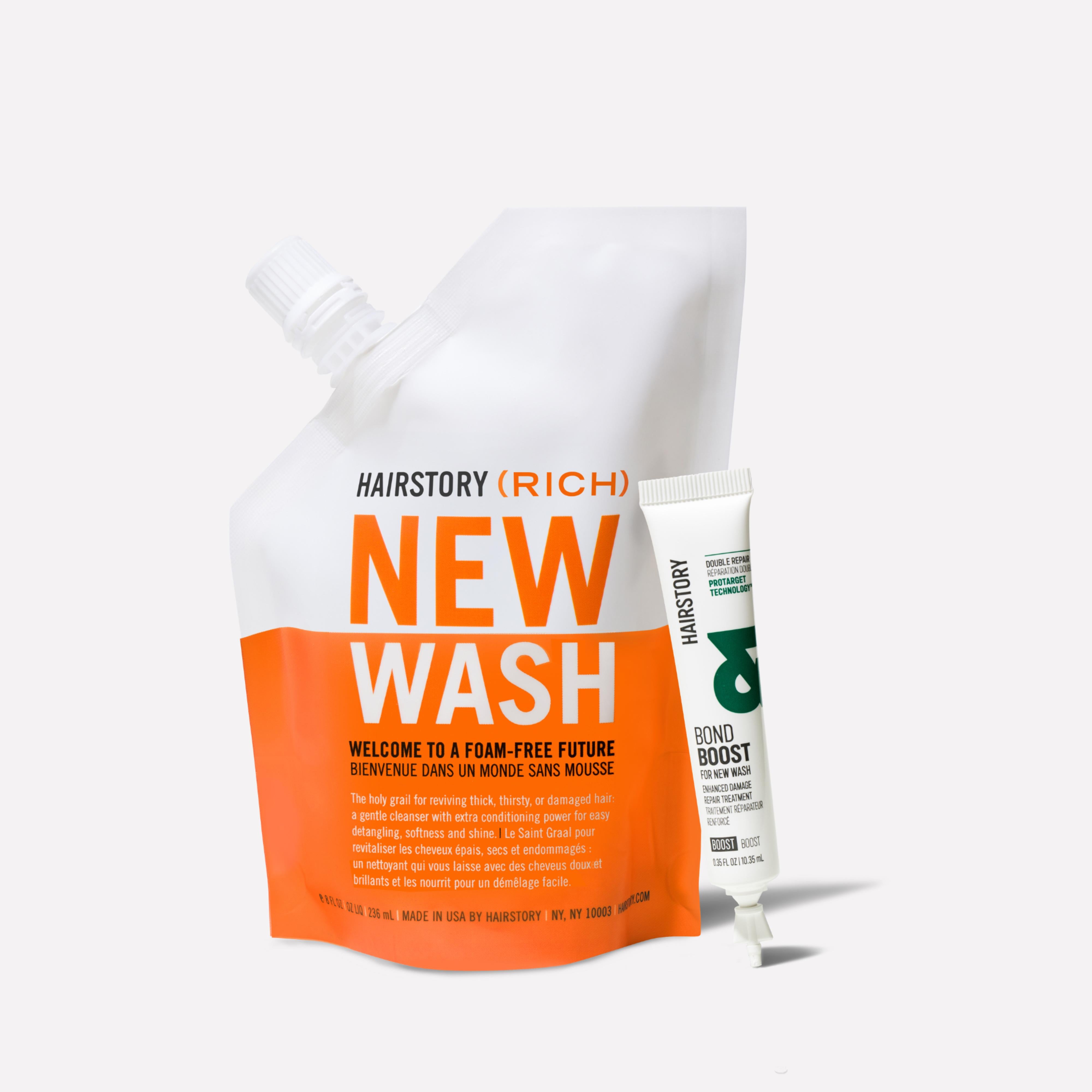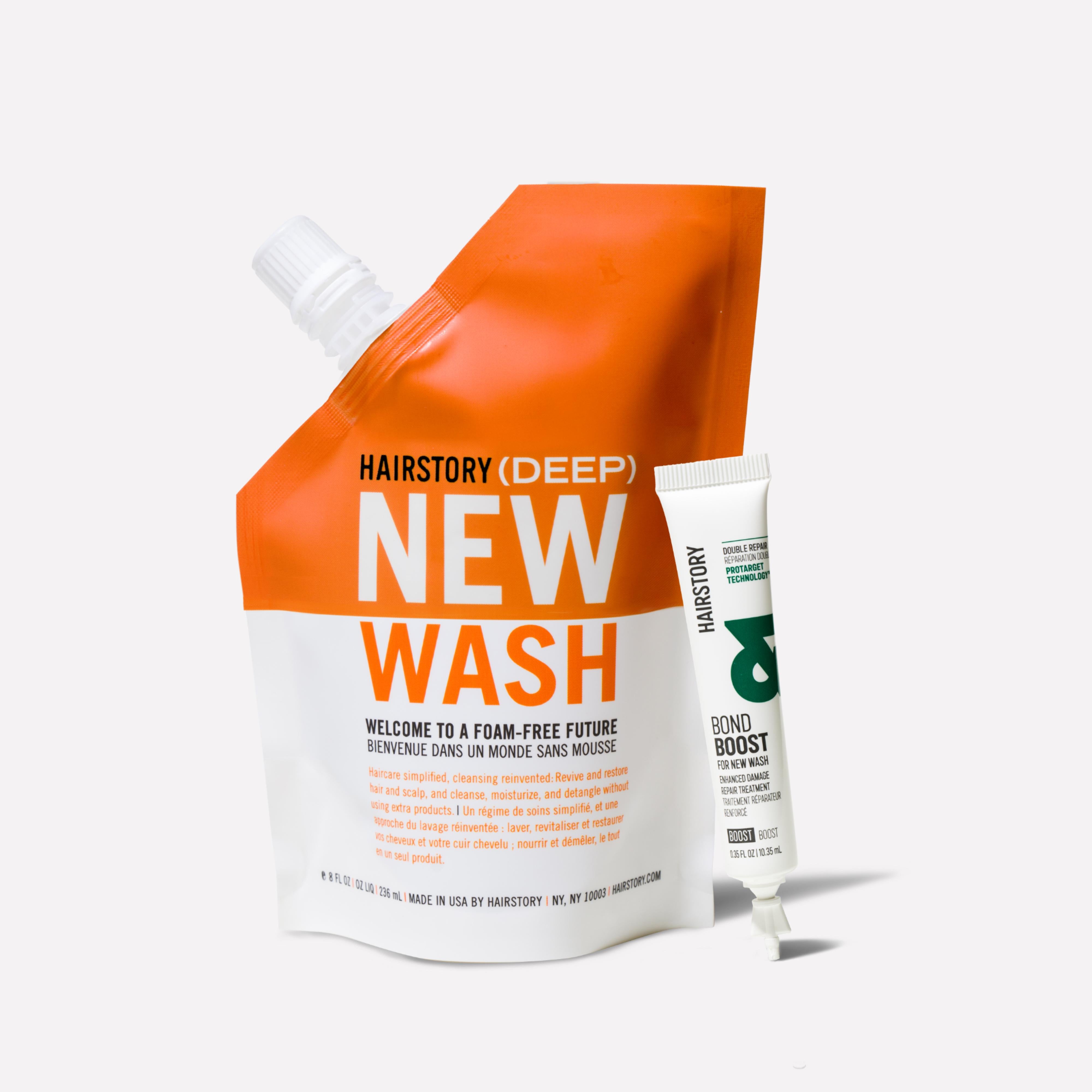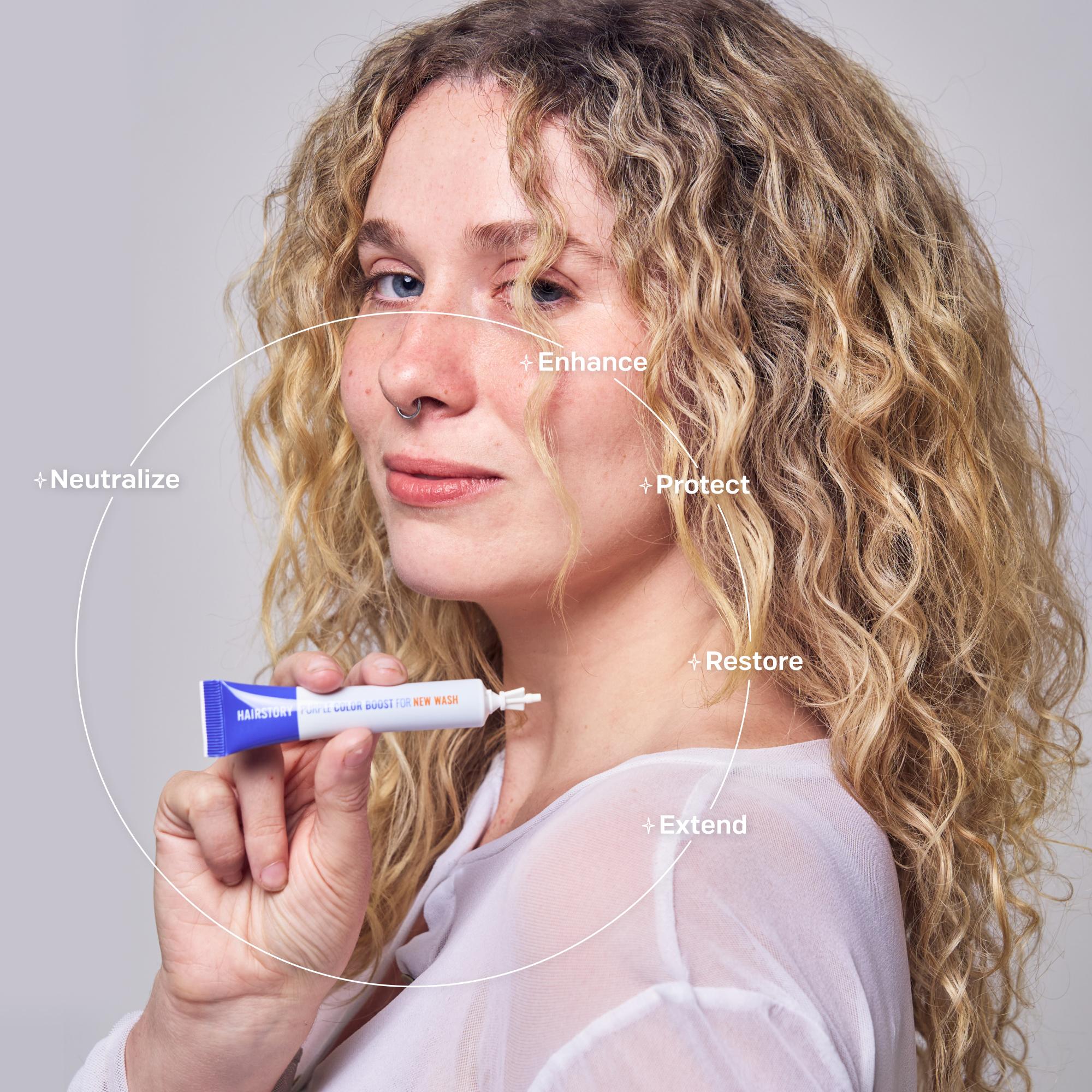How to Care for Long Hair
Since hair grows an average of a half-inch every month, you’ve been patient if you’ve managed to grow your hair to any great length. What’s more, hair that is exposed to the elements is prone to dryness, damage, discoloration, and can become quite vulnerable.
1. Go Suds-Free
Because of that exposure to the elements, long hair can require more attention—and more products. Goal number one in long hair care should be adding moisture at every stage of your hair regimen to keep strands supple and soft.
Start with a detergent-free cleanser that won’t create a moisture deficit. This means reconsidering your relationship with traditional shampoo. You wouldn’t wash a precious cashmere sweater in any old detergent, and then toss it into a hot dryer, would you? Of course not!
New Wash cleanses with a special blend of Aloe Vera and essential oils—and no detergent. It doesn’t lather—a small sacrifice for much healthier hair. Preserving your hair’s natural oils means maintaining its protective barrier, allowing your scalp to relax, which means less oily hair, less hair breakage, longer-lasting hair color, and overall shine and health. By embracing this approach, you’ll set the foundation for healthier and more effective long hair care.
2. Keep Long Hair Well-Conditioned
The smoother and more tangle-free your hair before attempting any combing or styling, the better. Conditioning products are essential for a successful long hair care routine, both in the shower and out; this is where most of your hair care dollars should go, as you’ll likely be using a lot of them.
Before applying any conditioning product—whether leave-in or not—gently wring out as much water from your hair as possible. This helps the products penetrate the cuticle and deliver moisture to the deeper layers, keeping your hair nourished and resilient.
For long hair, leave-in conditioners often make more sense than traditional in-shower versions, which only have a few minutes to do their work before being rinsed away. And since blow-drying should be done only on occasion (more on heat styling below), the leave-in variety is the perfect way to “set” your hair as it air-dries and bring out its natural texture, whatever that may be.
Hair Balm is one of the most versatile products of its kind, offering benefits for every hair type. If you aren’t sure of your hair type or how to care for it, take our hair care quiz to refine your long hair care routine and find the best solutions for your unique needs.
3. Use Dry Shampoo to Avoid Over-Shampooing
In general, hair should be washed less frequently than most people think as frequent shampooing with traditional shampoo is the best way to ensure dried-out hair and a shell-shocked scalp. Dry shampoo or hair powder can keep hair oil-free between washing. Don’t rely on it too heavily because build-up on the scalp can impact hair follicles, lead to hair loss and potentially reduce the diameter of each hair strand as it grows or stunt hair growth in general.
4. Massage the Scalp for Healthy Follicles
Maintaining a healthy scalp is foundational for long hair care. A nourished scalp not only supports the strength of your strands but also ensures they grow long and resilient. Regular scalp care should be a core part of your long hair maintenance routine, as it directly impacts the health and vitality of your hair.
One of the easiest and most effective ways to care for your scalp is through massage. Thoroughly massaging your scalp on a regular basis is a simple and sensual form of self-care that also stimulates blood flow to the follicles. This increased circulation delivers the nutrients necessary for healthy hair growth and strengthens the roots.
For an even more effective experience, consider pairing your scalp massage with oil. Lightweight options like jojoba or argan oil can hydrate your scalp while delivering vitamins that encourage growth. A scalp massage brush can further enhance the process by gently exfoliating and releasing dead skin cells, creating an ideal environment for hair growth.
To grow long, healthy hair, you must start at the root. By focusing on your scalp’s health, you’re investing in the strength and longevity of your strands.
5. Overnight Care for Long Hair
Protecting your long hair while you sleep is just as important as your daytime routine. Use a silk or satin pillowcase to reduce friction that can cause breakage and frizz. Consider loosely braiding your hair or tying it in a low bun to prevent tangles and knots. For added protection and hydration, apply a lightweight leave-in conditioner or hair oil before bed to keep your strands nourished overnight.
By incorporating these simple habits, you can ensure your long hair stays healthy and damage-free, even while you rest.
6. Detangling and Brushing Long Hair
Maintaining long hair means keeping it tangle-free and well-brushed to avoid breakage and promote healthy growth. Proper detangling and brushing not only protect your hair from damage but also distribute natural oils to keep it nourished and shiny.
Techniques for Gentle Detangling
Tangles can cause stress to your hair and lead to breakage, so gentle detangling is key:
- Prevent Knots in Windy Situations: Secure your hair in a ponytail, bun, or cover it with a hat or scarf when outdoors.
- In the Shower: Use a wet brush to gently comb conditioner through your hair while rinsing. This helps detangle while smoothing your strands.
- After Showering: Avoid rubbing your hair with a towel. Instead, pat and blot your hair dry using a microfiber towel or a soft t-shirt to prevent roughing up the cuticle and creating tangles.
- Start at the Ends: When detangling, begin at the ends of your hair and work upward in sections to avoid pulling knots tighter. Use a wide-tooth comb for the most delicate touch.
Best Brushes and Combs for Long Hair
Using the right tools for your hair type is essential for maintaining long, healthy strands:
Boar Bristle Brushes: Ideal for fine hair, these brushes help distribute natural oils for added shine.
Boar/Nylon Combination Brushes: Perfect for medium-textured hair, providing gentle detangling and effective oil distribution.
Nylon Brushes: Best for coarse hair types, as they detangle without pulling or causing damage. If you have coarse hair, it’s important to understand how to properly care for coarse hair.
For maintaining long hair, the type of brush you use truly matters. Good brushes can be expensive, but with proper maintenance, they can last for years. Clean them regularly using a mild shampoo or dish soap to remove oils and styling product buildup.
Caring for Brushes and Combs:
High-quality brushes are an investment. Keep them in good condition by regularly removing hair and washing them with a mixture of baking soda and warm water or mild shampoo.
By following these detangling techniques and choosing the right brushes, you can keep your long hair smooth, manageable, and healthy without compromising its natural beauty.
7. Cut Long Hair for Health
Shape up your ends by trimming an inch or two every 3 months or so – remove any signs of damage or split ends that curly textures are especially prone to. Your longest hair is your oldest hair, obviously, and your ends are usually the driest and most damaged.
Split ends are the beginning of hair fibers unraveling, and once the fissures make their way up the hair shaft, it’s too late. The best preventative measure – and the only real remedy is a sharp pair of scissors. Trim and shape up even if you see no evidence of split ends; curly textures are more prone to them. If that sounds like you, make sure you know how to take care of curly hair and get a trim every so often.
8. Long Hair Cuts
There are a variety of long hair cuts and hair doesn’t have to be all one length. In fact, it can obscure your features and distract the eye.
We asked scissor wizard Wes Sharpton the question: What is the modern long haircut? “You have to understand that the eye has to travel, he replied,” as Diana Vreeland famously said. “Long hair has the tendency to draw the eye downward and away from the face, which is where you want someone to be looking, ideally.”
The Shag haircut can be a great option for long hair for this very reason because, “First, you look straight at the eyes framed by the bangs, and then the side layers draw attention to the cheekbones, and on down to the clavicle.” By definition, the Shag is a multitude of lengths that all work together to frame any feature.
The perfect illustration is by Beau Bollinger at Hairstory Studio Dallas who cut a truly epic shag (below) on a client with hair “so long I could barely fit it in the frame.” In his 20 years of cutting hair, “This took the prize for the longest – and perhaps maybe most nervous-wracking – haircutting session,” and required bringing in @shelbiebartok to style it with Hair Balm (never shampoo) to bring out the best in her curls.
Styling tip: To give long bangs a classic curlicue sweep, “tuck them behind your ears while you let them dry,” suggests Sharpton, and you’ll have the perfect bend when you untuck them. If shags, bangs, and bits aren’t for you, “Keep it simple and classic,” he advises, and, “don’t go overboard with the framing in front. Think more classic Cher than The Rachel.”
9. Avoid Hot Tools When Styling
Hot tools – curling irons, flat irons, and blow dryers – break down your hair structure with high temperatures so it can be reshaped to your wishes. Daily heat styling is not ideal for keeping long hair long, but for the occasional change of texture – coily hair to straight hair or the opposite – it’s essential that you use a product that coats your hair strands and protects them from the heat.
Air-drying is the safest way to go, but when you’re feeling the need to raise your glamor game, Choose a hair product with copolymers, proteins, and essential oils to help hair withstand heat and hold on to moisture – reach for Dressed Up.
- Try not to heat style more than twice weekly.
- Use a heat protectant cream that will hold your hairstyle while also preventing damage.
- Work quickly to limit contact with hot metal or air.
- Unplug when you notice chronic dryness, frizziness, or split ends.
Many products claim to revive, restore, and actually ‘heal’ dry, damaged hair – falsely, because there is no way to actually reverse frying by heat tool. There are ways to improve its appearance, however. Read about the best ways to treat – and avoid – dry hair here.
A Few Final Hair Care Tips to Keep Long Hair Healthy:
Tip 1: Eat plenty of protein.
Nutritional deficiency can compromise hair growth and condition. Eat a wide range of healthy foods, including lean protein since hair consists primarily of keratin, a hardened form of the same protein that makes up your skin. Protein deficiency can result in hair thinning. In general, opting for whole and lightly processed foods as often as you can, and drinking plenty of water is important for so many reasons, including the condition of your hair and skin.
Tip 2: Mind your hair ties.
Long hair needs to pulled-back and up from time to time to get it out of the way, but it’s important that you avoid bands that are so tight that they can cause hair breakage. In addition, Try not to put elastics or clips in exactly the same place every day; switch between high ponytails and low and with just enough tension to keep hair in place. Scrunchies are still in vogue after all these years, and your long hair will appreciate them.

